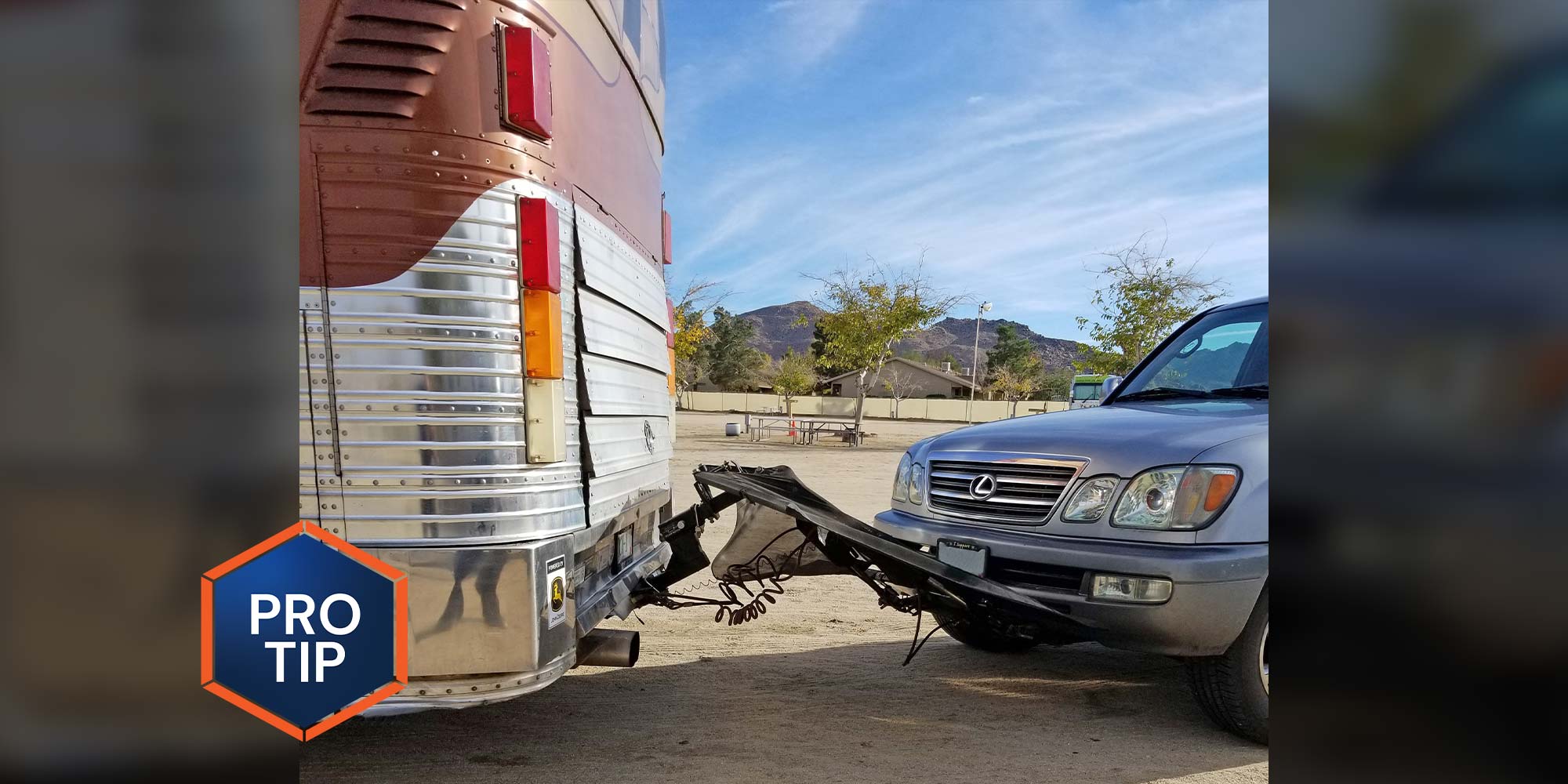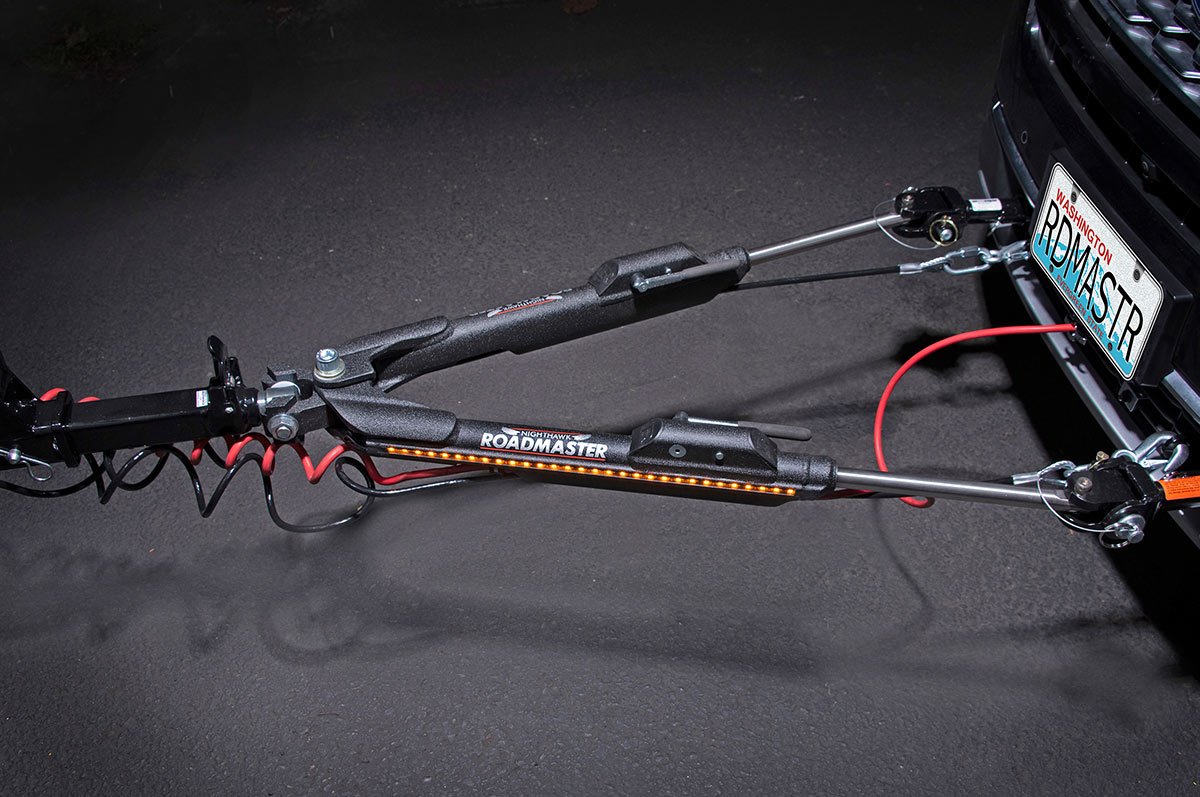Dinghy Towing Safety

Photo courtesy of Roadmaster Inc.
A quality base plate, tow bar and braking system are all important for a safe dinghy towing experience — but before you hit the road for the first time, make sure that the tow bar is level, or as close to level as possible, between the dinghy and your motorhome.
A tow bar that is more than a few inches from level at either end can cause significant wear-and-tear to the tow bar, baseplate and even the dinghy’s frame/suspension. Worse yet, a bar that is too high at the motorhome end can cause the bar and/or hitch assembly to collapse while a bar that is too high at the dinghy end can cause the towed vehicle to “leap frog” (drive up and over) the tow bar.
Check with your equipment manufacturer to see what is safe — but if the bar is not level, you can purchase a drop receiver with an appropriate amount of drop or rise to make sure the tow bar can be installed in a level position.

Always ensure that the hard connection between your motorhome and dinghy — the tow bar — is as close to level as possible.
Also, when attaching the tow bar, always stand to one side — don’t position yourself between the tow vehicle and motorhome and don’t stand between the tow bar arms when releasing the tow bar. The towed vehicle can lurch forward when the locking mechanisms (if equipped) are released — and if you’re standing between the two vehicles, you could be severely injured.
Get Updates
Subscribe today and never miss an issue!
Get all the latest tips and news to keep you moving on that open road!
Current Issue
Check it out!
As the summer days linger on, escape the heat with the newest edition of RV Enthusiast! The July/August issue covers Improving RV A/C Efficiency, Rear- and Side-View Cameras, Truck shock Repair, PLUS so much more!
Already a Subscriber? Click here for Access to the Full Issues.

